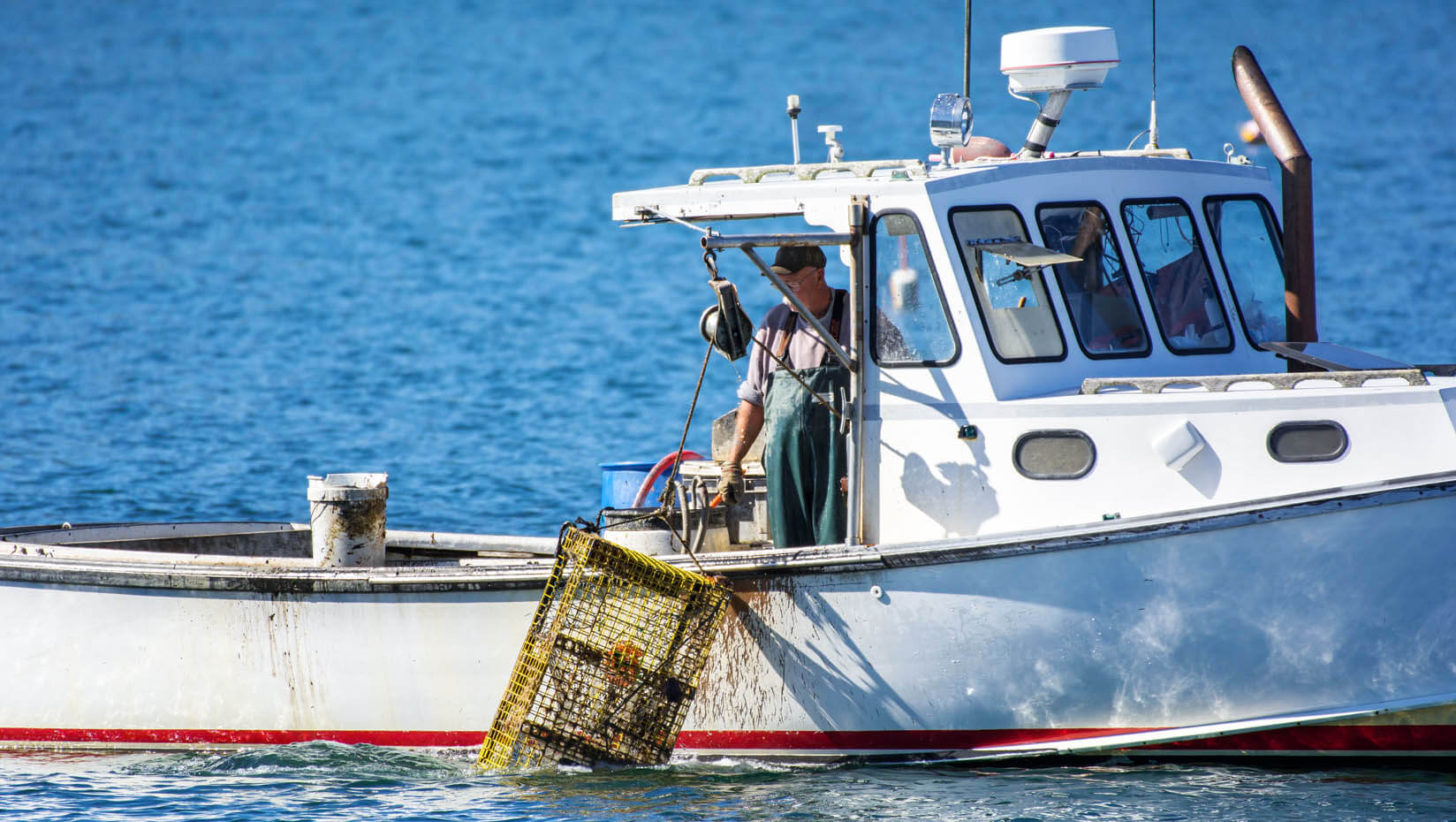
UMaine research defines lobster line requirements for whale entanglement risk reduction
Efforts to reduce the risk of entanglement in lobster trap lines for the endangered North Atlantic right whale may need to consider more factors than just line strength if they want to be safe, effective and economical, according to new research led by the University of Maine and the Maine Department of Marine Resources (DMR).
North Atlantic right whales have the potential to get caught in the vertical line that runs from gear set on the bottom to the surface marker buoy in fixed-gear fisheries, like that of the American lobster fishery in Maine. Often whales can break free of the gear and are simply left with scars, but the risk of death increases as the lines are stronger and more densely distributed throughout the water.
To mitigate right whale injury and deaths, U.S. federal management agencies like the National Oceanic and Atmospheric Administration have mandated weak points or weak ropes be inserted into vertical lines to limit strength and provide points at which right whales can break the ropes if they become entangled. New regulations on minimum trawl lengths — or the number of traps fished per vertical line — took effect on May 1, 2022, and caused increases in lobster fishery vertical line loads across all fishing grounds, considerably increasing with depth and distance from shore.
However, limiting the strength of vertical lines for lobster traps could negatively impact the economic resilience of New England fishing communities if it forces the purchase of new equipment or increases the incidence of break-offs and lost gear. Increasing trawl lengths is also a safety concern to the fishery – the more traps in a trawl, the heavier it is, and the greater the risk the trawl will get snagged on rocky outcrops on the sea bed. Finding a balance between the environment, the economy and safety is key.
In a study published April 2022 in the journal Marine and Coastal Fisheries, researchers from UMaine and Maine DMR looked at the vertical line strength requirements for Maine’s American lobster trap fishery under the new regulations. Using 1,700-foot-pounds as a low whale mortality threshold for vertical line strength, they compared that value to the hauling load requirements of the fishery, which the researchers modeled using measurements of strain put on vertical lines used in typical lobster trap operations to determine the minimum strength necessary to fish safely and avoid dangerous line breaks.
The models indicated that inshore areas can be safely and effectively fished within the existing federal whale-safe breaking strength limits, both historically and under the new regulations. However, the offshore lobster fishery, which will see the largest increases in line load under the new rule, has loads that often exceed the 1,700 ft-lbs threshold, and will need a variety of gear modification options or additional measures beyond line strength reductions to reduce entanglement risk and mortality of right whales while preventing dangerous line breaks. The authors recommend that management should consider the efficacy of weakening vertical lines for offshore areas or during extreme weather for the safety of the fishermen when implementing trawl length minima so fishermen can target the most efficient areas without losing gear.
“This work is critical to test a lot of assumptions about gear dynamics that go into the new risk reduction rules, and look at how things will work for fishers on the water. We are finding weak rope has the potential to reduce entanglement mortality risk for inshore areas, but it will not be a perfect fit across the entire fishery,” says Nathaniel Willse, Ph.D. student at the School of Marine Sciences and principal author of the study.
Willse’s research was supported by a Maine Sea Grant-Lobster Institute Fellowship.
Using the results, the researchers aim to provide guidelines for the minimum line strength necessary for fishery operations, which can be used to inform management goals that balance the need for a sustainable lobster fishery and the conservation of right whales.
“As we build off of this work, we hope to set an example for ways in which to use science to understand the needs of the fishing industry that is being regulated and incorporate that knowledge into the measures that are proposed for the conservation of endangered species,” says Erin Summers, co-author of the study and director of the Division of Ecology and the Environment at the Maine DMR.
Contact: Sam Schipani, samantha.schipani@maine.edu
